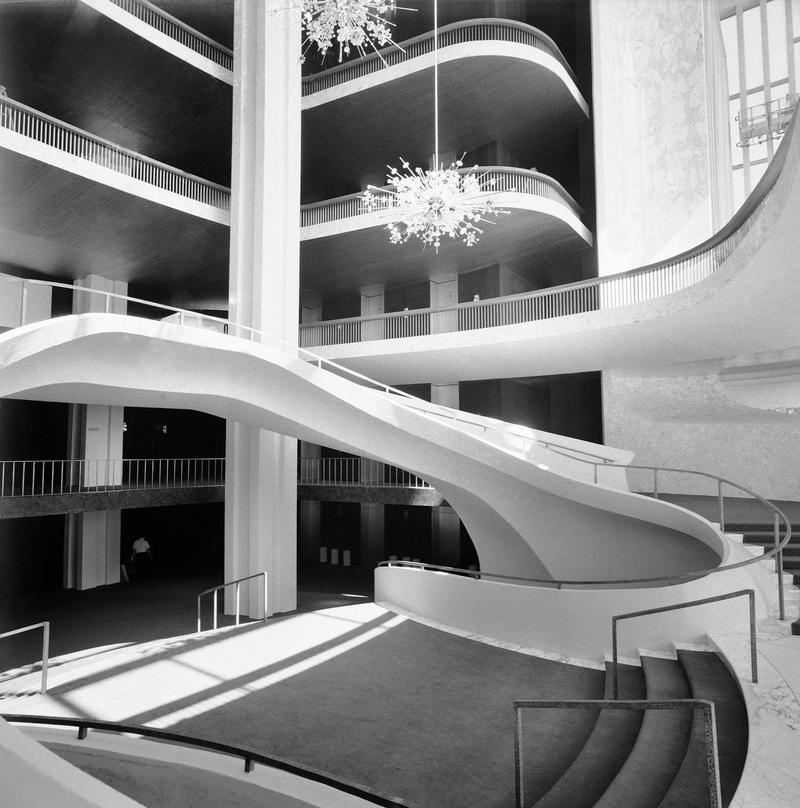I commented the other day on the architectural qualities of the buildings now completed in the Lincoln Center group, with particular reference to the Vivian Beaumont Theater. There's one other aspect about Lincoln Center which I believe is worth commenting on, and that is the way people get to and from it when there are performances going on In all four theaters. Together, the Philharmonic Hall, the New York State Theater, the Metropolitan Opera House, and the Vivian Beaumont Theater seat almost 11,000 persons. When the Juilliard School is open, with Its chamber music hall, and when outdoor audiences begin attending concerts In the shell of Damrosch Park next door, there will be thousands more. Other theaters will undoubtedly be erected on private land in the Lincoln Square area.
How do people get to and from all this with any comfort and convenience? The answer is: they don't, and matters are likely to get worse.
Of course, a great many people come and leave by subway, providing that the West Side IRT at 66th Street will carry them - up or downtown - to where they want to go or come from, or they can walk all the way to Columbus Circle and get the IND trains. Buses run past Lincoln Center also, but the Riverside Drive Washington Square line, for some strange reason, makes its last run from each end at 10:30, so that by the time the show is over, one is lucky if one catches the last bus and, after that, one is dependent entirely on the jam-packed Crosstown 66th Street bus to connect with other up-and-downtown public transportation.
Now many people cannot leave by bus or subway. Those who live in the suburbs, the disabled, the elderly, people in evening dress, and especially those who don't want to risk walking home from the subway. Likewise everyone else who, in bad weather is stranded in storm, wind, or cold waiting for a bus or walking many blocks or walking to the appropriate subway station. All these people are dependent on cars, and taxis. Taxis can sometimes be found going to Lincoln Center but they are rare birds indeed when one has to get home. Drivers of private cars have other troubles. But why should all of this inconvenience be necessary at all? Why should not a complex of entertainment buildings, where anywhere from 10 to 12 thousand people congregate at one time and leave at one time, have been provided with more than 700 parking spaces as part of its original design? Depending on nearby private parking facilities is chancy at best and, so far as I know, there are only a few hundred or so additional spaces now available, which may soon disappear with new construction, so that at the most there is one garage space for every ten theater-goers.
Thus the only people who can attend Lincoln Center with any degree of comfort and safety are those who can afford chauffeur-driven cars. Is this what was conceived by the organizers of this vast and ambitious enterprise, which was to be New York's great cultural center for all the people? One wonders whether so many things should have been put in one center at all. This is Robert C. Weinberg critic in planning and architecture.
 The NYPR Archive Collections
The NYPR Archive Collections
